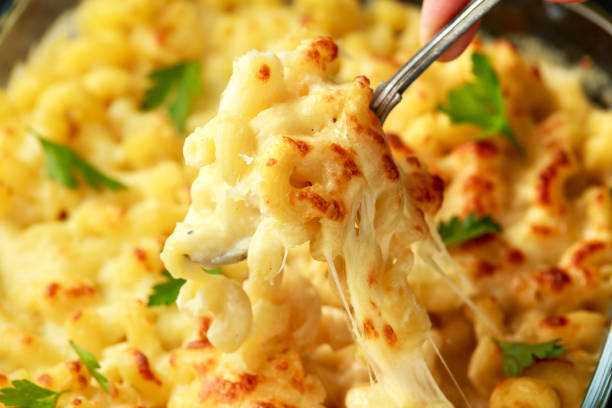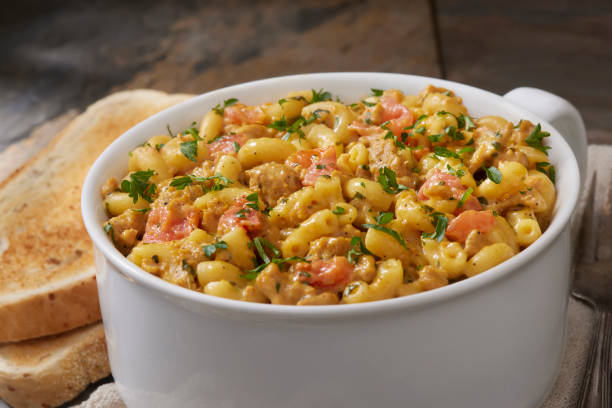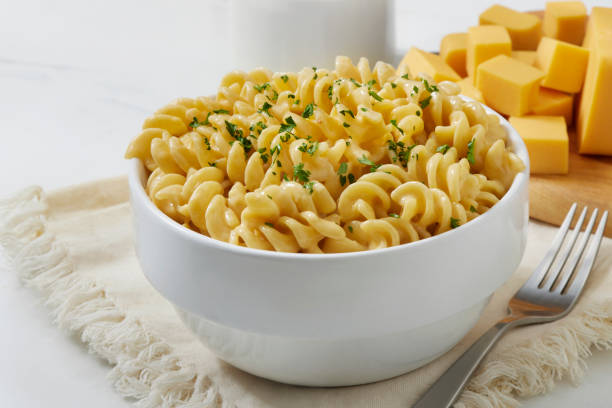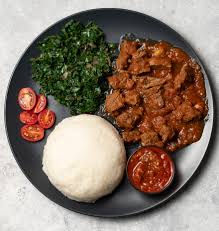Macaroni and cheese is a classic comfort food enjoyed by many around the world. While its rich flavor and creamy texture make it a popular dish, its nutritional profile varies significantly depending on the ingredients and preparation methods. Traditional macaroni and cheese is made with pasta, cheese, butter, and milk, all of which contribute to its calorie-dense and nutrient-rich composition. This essay examines the nutritional value of macaroni and cheese, including its benefits and potential drawbacks.

A typical serving of macaroni and cheese is calorie-dense, with a 1-cup serving providing between 300 and 500 calories. The pasta, usually made from refined flour, is the primary source of carbohydrates in macaroni and cheese, and it contributes to the dish’s overall calorie count.The carbohydrates in macaroni provide a quick source of energy, which can be beneficial for those needing an energy boost. However, refined pasta has a high glycemic index, which means it can cause rapid spikes in blood sugar. This may be a consideration for people with diabetes or those trying to maintain stable blood sugar levels. Whole wheat pasta can be used as a healthier alternative to add fiber and lower the glycemic load of the dish.

Macaroni and cheese is also high in fats, primarily from the cheese, milk, and butter used in its preparation. Fats are essential in a balanced diet, as they provide energy, aid in the absorption of fat-soluble vitamins, and play a role in cell structure and hormone production.However, the fats in traditional macaroni and cheese are mainly saturated fats, which are known to raise LDL (bad) cholesterol levels and increase the risk of heart disease when consumed in large quantities. A single serving of macaroni and cheese can contain 10-20 grams of fat, with a significant portion being saturated fat. Using reduced-fat cheese, substituting some of the butter with healthier fats like olive oil, or opting for plant-based milk can reduce the saturated fat content without compromising taste.

Cheese and milk contribute protein to macaroni and cheese, making it a relatively protein-rich dish. Protein is essential for muscle growth, repair, and overall bodily function. A standard serving of macaroni and cheese can contain around 10-15 grams of protein, depending on the amount of cheese and milk used.While this protein content can be beneficial, the amino acid profile of macaroni and cheese is not as complete as other protein sources like meat, fish, or eggs. To increase the protein quality of macaroni and cheese, one could add ingredients such as ground lean meat, legumes, or even vegetables that contain protein, like peas or broccoli.

One of the key nutritional benefits of macaroni and cheese is its high calcium content, due to the cheese and milk used in the recipe. Calcium is essential for maintaining strong bones and teeth, muscle function, and nerve transmission. A serving of macaroni and cheese provides approximately 20-30% of the recommended daily intake of calcium, making it a good choice for meeting daily calcium needs.In addition to calcium, macaroni and cheese contains other essential nutrients, such as phosphorus, vitamin A, and vitamin B12. Phosphorus works alongside calcium to support bone health, while vitamin A is crucial for vision, immune function, and skin health. Vitamin B12 is essential for red blood cell production and neurological function, and it is found naturally in dairy products. These vitamins and minerals make macaroni and cheese more nutrient-dense than many other comfort foods.

One potential drawback of macaroni and cheese is its high sodium content. Cheese, especially processed cheese, is often high in sodium, which is used as a preservative and flavor enhancer. A serving of macaroni and cheese can contain upwards of 500-800 milligrams of sodium, which is about one-third of the recommended daily limit for adults.Excessive sodium intake is linked to high blood pressure, heart disease, and stroke. To reduce sodium levels, using low-sodium cheese, reducing the added salt in recipes, or opting for homemade rather than boxed varieties can be beneficial. Adding spices like garlic powder, paprika, or mustard instead of salt can also enhance the flavor without increasing sodium.

Although traditional macaroni and cheese can be high in calories, fats, and sodium, there are many ways to make this dish healthier. Whole wheat or legume-based pasta can be used to increase fiber content and add nutrients like B vitamins and iron. Low-fat or plant-based cheeses and milk can be used to reduce saturated fat content, while lean proteins such as chicken, turkey, or plant-based alternatives can add additional protein.Vegetables like spinach, broccoli, or bell peppers can be added to macaroni and cheese to boost its nutrient profile. These vegetables provide fiber, vitamins, and minerals while lowering the dish’s overall caloric density. Adding vegetables also increases the volume of the dish, making it more filling and nutritious.

Macaroni and cheese is a comforting and nutrient-rich dish that provides a good source of protein, calcium, and other essential vitamins and minerals. However, it is also high in calories, saturated fat, and sodium, which can pose health risks when consumed in large quantities. By making mindful modifications, such as using whole-grain pasta, reducing saturated fats, and adding vegetables, macaroni and cheese can be transformed into a healthier dish that still satisfies cravings. Whether enjoyed in its traditional form or with healthier substitutions, macaroni and cheese can be part of a balanced diet when eaten in moderation.




may88 top đúng kiểu quay cái là trúng, mà lúc đó mạng lag muốn xỉu
https://shorturl.fm/ywujA
https://shorturl.fm/lWDHB
https://shorturl.fm/Z7B7Y
https://shorturl.fm/495Xl
https://shorturl.fm/him2q
https://shorturl.fm/OxqmH
https://shorturl.fm/Aa71g
https://shorturl.fm/WsiRH
https://shorturl.fm/pXW5C
https://shorturl.fm/SnVvH
https://shorturl.fm/x6OMo
https://shorturl.fm/lsV23
https://shorturl.fm/74UqD
https://shorturl.fm/tpVVN
https://shorturl.fm/XQBKW
https://shorturl.fm/dWYQv
https://shorturl.fm/gUjpC
https://shorturl.fm/D9cGK
https://shorturl.fm/5QLir
https://shorturl.fm/zA2PS
https://shorturl.fm/kypVu
https://shorturl.fm/4ugHx
https://shorturl.fm/pbpox
https://shorturl.fm/bOja7
https://shorturl.fm/N0cgk
https://shorturl.fm/wmSL8
https://shorturl.fm/v1nhb
https://shorturl.fm/nRlS7
https://shorturl.fm/jlYOa
https://shorturl.fm/aJj1N
https://shorturl.fm/rj49o
https://shorturl.fm/JggWG
https://shorturl.fm/ebBeU
https://shorturl.fm/66t7u
https://shorturl.fm/EBEPe
https://shorturl.fm/BxTGL
https://shorturl.fm/YIs9I
https://shorturl.fm/hgRPD
https://shorturl.fm/dugw6
https://shorturl.fm/R9ELw
https://shorturl.fm/YBrZl
https://shorturl.fm/U9I8E
https://shorturl.fm/VOR5A
https://shorturl.fm/1pjb7
https://shorturl.fm/hBeUj
https://shorturl.fm/tFbIx